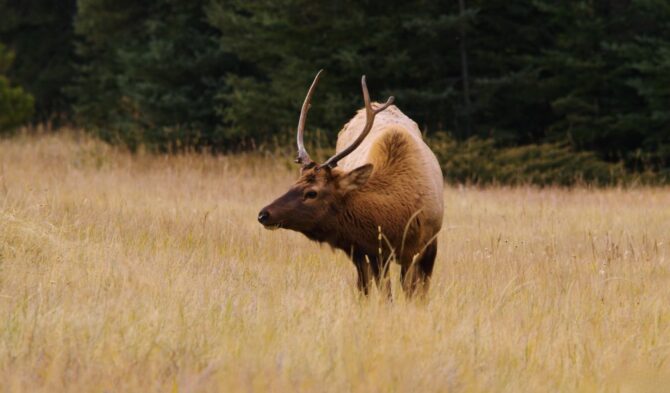Florida is termed the sunshine state, and as far as wildlife goes, there is an abundance of them in this state.
The richness in fauna is possible due to the numerous habitats and good spots where animals can be found.
Some examples are the Everglades, the Dry Tortugas National Park, and the Merrit Island National Wildlife Refuge. Amidst this wildlife, we have the dignified owls, which we’ll be looking into.
There are about 8 species of owls in Florida, 6 of which are more common. The last 2 are rare but still show up and are worth including on the list.
Some of the common species include the great horned owl, barn owl, and burrowing owl. Rare species include the snow owl and the Northern saw-whet owl.
We’ll look into these species in more detail. Read on to discover some fascinating facts and how to recognize these different species based on their appearance, sounds, and migratory patterns.
The 8 Species of Owls in Florida
1. Great horned owl

- Scientific name: Bubo virginianus
- Length: 18 to 25 inches
- Weight: 32 to 88 pounds
- Wingspan: 40 to 57 inches
The great horned owl is called ‘great’ for good reasons. It is a heavy bird, ranking the 2nd heaviest in North America as a whole.
It is also the most distributed true owl in the continent, including Florida. It goes by other names like the tiger owl and the hoot owl.1
The great horned owl is not migratory, which means it remains in its territory for a long. It occurs all year in Florida, where you can see it perching around woodlands, farms, forest edges, and forests.
The species doesn’t mind being around humans, so another good way to locate it is in suburban areas. It also occurs in deserts and other dry environments.
As its alternative name implies, the great horned owl hoots. However, its vocalizations extend beyond hooting. It screeches, mews, growls, and squawks.
These birds are easily recognized by their long greyish brown feathers, a reddish brown or gray facial disc, and a white throat patch.
They are highly adaptable, which explains their widespread status. Their vocalizations may come across as scary to someone who’s not used to the sounds.
They screech, mew, squawk and hoot. Their diet includes different invertebrates, reptiles, amphibians, etc.
2. Burrowing Owl
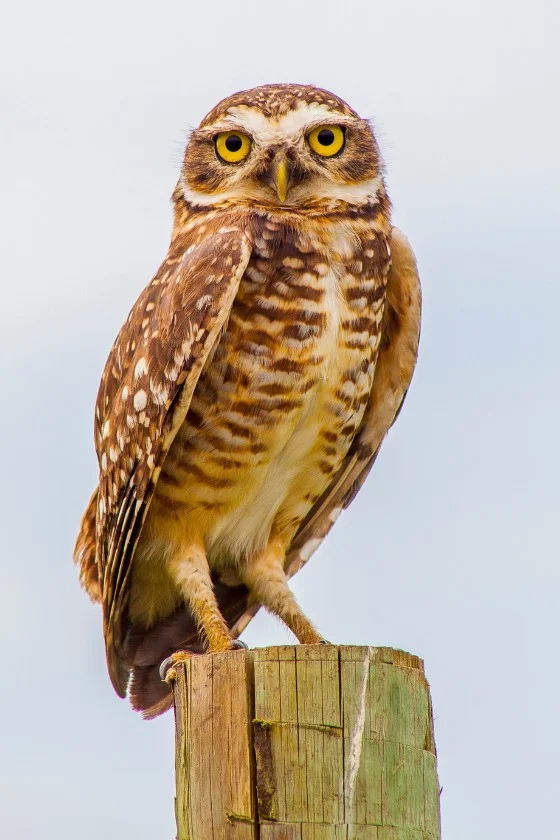
- Scientific name: Athene cunicularia
- Length: 7 to 11 inches
- Weight: 5 to 9 pounds
- Wingspan: 20 to 24 inches
The burrowing owl also goes by the name the shoco, and its name was inspired by the fact that it nests and roosts in burrows.
It chooses burrows to mimic the rattlesnake as a defensive tactic. Its vocalization also sounds similar to the rattle and hiss of a rattlesnake.
You’d find the burrowing owl throughout the year in Florida, though some are known to migrate. They inhabit prairies, grasslands, and many open areas in general.
The most obvious physical features of this bird are its small body and long legs. It is usually colored brown. Its diet comprises mainly insects and reptiles.
The burrowing owl is endangered in some parts of its range, though overall, it is considered the least concern. The dangers come mainly from habitat loss.
There’s also a reduction in the number of burrowing animals that this owl depends on to get a living space. It also risks getting attacked by some other animals and may even get hit by a car.
3. Eastern Screech Owl

- Scientific name: Megascops asio
- Length: 6 to 10 inches
- Weight: 4 to 9 pounds
- Wingspan: 19 to 24 inches
The Eastern screech owl is common around North America, and it can be described as having broad wings and a short tail.
This bird can either come in a gray or brown color. Additional physical traits include a large head, yellow eyes, and a bill. It is popular in Florida and does not seem to harbor any fear of humans.
The eastern screech owl is quite similar to its relative, the western screech, especially when it has a gray color. Sometimes it may even be hard to tell them apart.
Many experienced birders opt for using sound to tell them apart. The eastern screech owl doesn’t screech but would rather emit a sound that’s like the whinnying of a horse. It may purr too. The western screech owl screeches.
The screech owl hunts at night, and it is known to be an opportunistic predator. Its diet ranges from invertebrates during the breeding season to small mammals in winter.
4. Barred Owl
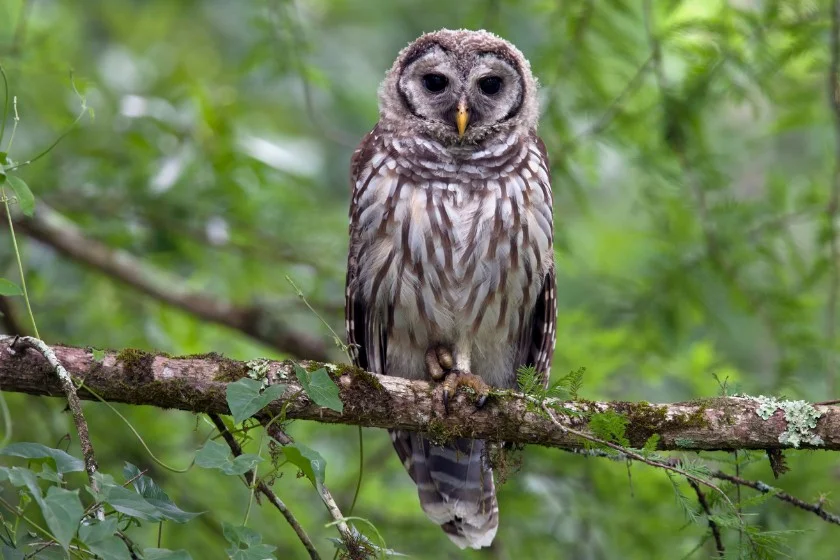
- Scientific name: Strix varia
- Length: 17 to 20 inches
- Weight: 16 to 37 pounds
- Wingspan: 39 to 43 inches
The barred owl is often found in deciduous forests and some other forest types but can be seen in open woodlands and parks.
It is a large bird with a lot of brown on its plumage and a big head. It can also be called the hoot owl, the striped owl, and the northern barred owl.
All the names relate to the sound and the white bars on their plumage. The bars are often found on the mantle and back, with some additional spots on some parts of the wings.
These birds are known to be loud vocalists, and their hooting can be easily heard in their range. They have other call types, like mumbling, but hooting seems to be the most common.
Sleeping time for this bird is often between 5:00 a.m. and 8:00 p.m., after which it begins the activity for the night.
It is a highly vocal bird with a series of calls, the most popular being a hooting sound. Their prey includes small mammals, amphibians, and birds.
5. Short-eared Owl
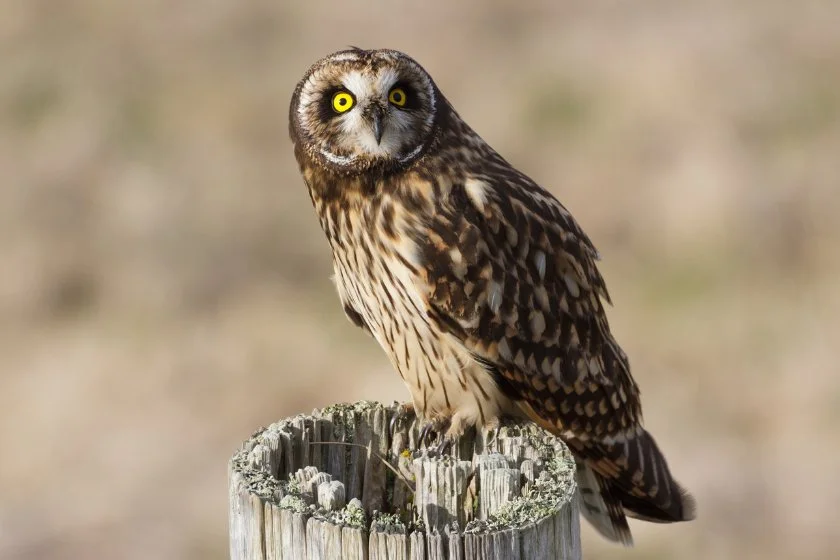
- Scientific name: Asio flammeus
- Length: 14 to 17 inches
- Weight: 7 to 17 pounds
- Wingspan: 34 to 41 inches
The short-eared owl is so named because of the small ear tufts that sit on its round head. Its colors are a mixture of brown, buff, and white.
You can find these creatures all over North America, and in Florida, they usually stay in open fields and grasslands.
They don’t vocalize a lot during winter, but in other seasons you might likely hear a raspy bark that sounds like waowk, waowk, waowk, or toot, toot, toot.
Another obvious trait of the short-eared owl is the way it flies. Unlike other owls that glide through the sky, the short-eared owl moves like a bat.
That’s because its wingbeats are irregular. It also has a bill that’s short, black, and strong. It is related to the long-eared owl, but the latter has a longer feather tuft that’s quite visible while at rest.
Their main diet is rodents, but they aren’t limited to that. Short-eared owls can also feed on birds and small mammals like muskrats and moles.
There are many special qualities they possess that distinguish them from other species. They can build their nests, and they can be active at any time of the day.
6. Barn Owl
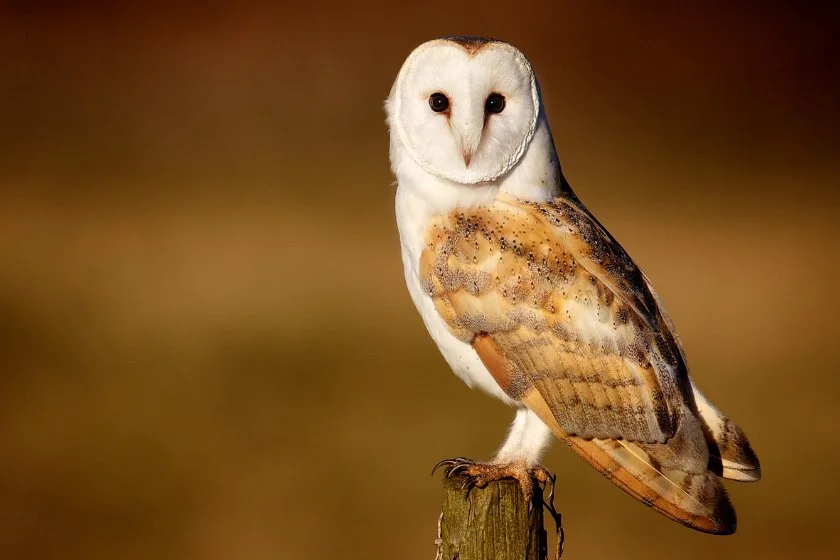
- Scientific name: Tyto Alba
- Length: 13 to 16 inches
- Weight: 14 to 25 pounds
- Wingspan: 40 to 50 inches
The barn owl is the most widely distributed owl species in the world, and it is one with a bad reputation.2
Its looks and vocal sounds have earned it many unflattering nicknames like demon owl, ghost owl, and even death owl.
These names are unfounded as the bird causes no harm. In Florida, you would find them around grasslands, open woodlands, farmlands, etc.
The barn owl has an overall pale brown or gray body, especially in the upper parts. The lower areas can be white or reddish buff. The eyes are black, giving it an eerie look.
These eyes, combined with the pale skin, are mainly what strikes fear in some hearts. Its vocalization is just as eerie, a shree scream that can be very loud.
They can also hiss like snakes to scare away predators. Contrary to popular opinion, the barn owl doesn’t hoot.
Barn owls are so named because of where they live. They usually stay in barns and old buildings, though they can also nest in tree holes and even old nests of other birds.
They often hunt at night, feeding on rodents, insects, lizards, and even birds.
7. Snowy Owl
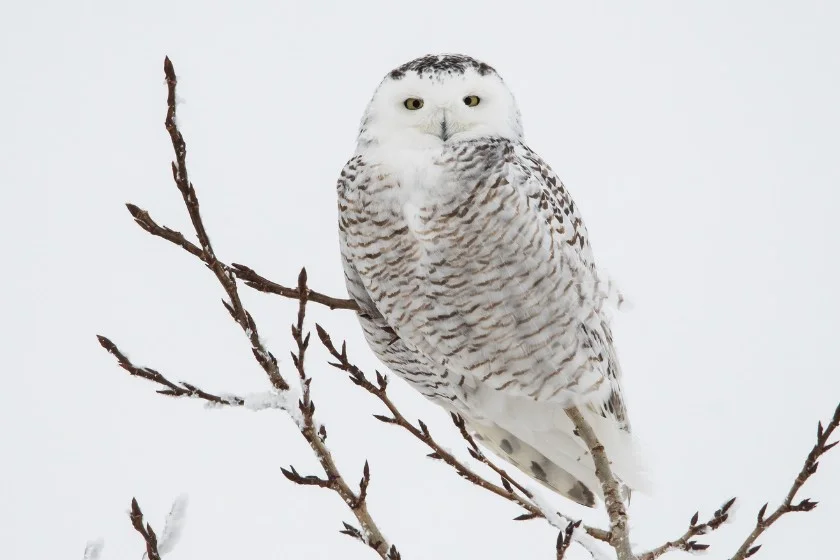
- Scientific name: Bubo scandiacus
- Length: 21 to 28 inches
- Weight: 56 to 104 pounds
- Wingspan: 50 to 57 inches
The snowy owl instantly stands out because of its white coat and yellow eyes. It is hard to miss this bird when you see it.
It is one of the rarest owls in Florida because the state isn’t part of its natural range, but it can be found in some years. The snowy owl often inhabits open environments.
Most of these birds aren’t fully white, but the males are more than the females. Older ones also tend to be whiter than their younger counterparts.
Females have more patterns than their males, usually on the head, underside, and wings.
This bird is a strong predator, hunting both during the day and at night. Their diet includes small mammals, rodents, birds, and small fish.
It has a wide range of vocalizations like cackling, grunting, hissing, squealing, and clucking.
8. Northern Saw-Whet Owl
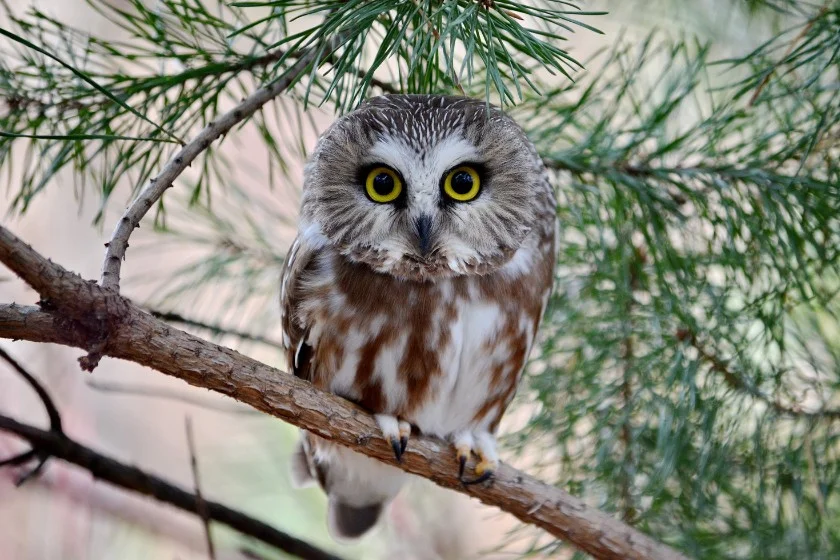
- Scientific name: Aegolius acadius
- Length: 7 to 9 inches
- Weight: 2 to 5 pounds
- Wingspan: 17 to 22 inches
The Northern saw-whet owl is a small species found in the Strigidae family, and it is one of the smallest in North America.
It is a migratory bird often found in coniferous forests in many regions of North America, including Florida.
The Northern saw-whet is less common in Florida, and the only time you might see it is during the winter on the northern sides.
Besides coniferous forests, you can also find the saw-whet owl in deciduous or mixed woodlands during the winter.
This bird earned its name from the sound it makes. The sound is like sharpening a blade with a whetstone.
It feeds mainly on small mammals like rodents. Because of its size, it is an easy target for predators.
Conclusion
The different species of owls in Florida contribute to the rich share of wildlife in the sunshine state.
The latter differs in looks, size, and even behavior, but there are many points in common. If you’re chanced to see one, consider it a beautiful opportunity.
Next up…
- Owls In Alabama: 10 Species Identification, Facts, Pictures
- 35 Sneaky Animals That Are Stealthy (With Pictures)
References & Notes
- Great Horned Owl. Chesapeake Bay Program.
- Barn Owl. Wikipedia.

